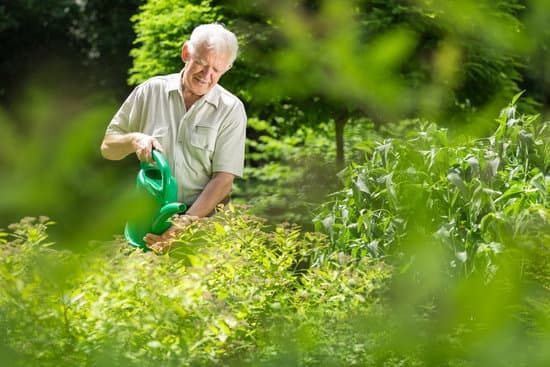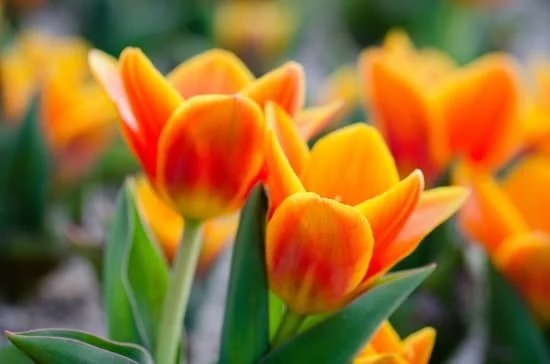Are you looking for ideas for vegetable container gardening? Container gardening is a popular trend that allows individuals to grow their own vegetables in small spaces. This method is gaining popularity due to its convenience, versatility, and the ability to control growing conditions for optimal plant health.
Vegetable container gardening involves planting and growing vegetables in pots, buckets, crates, or any other suitable containers instead of traditional garden beds. This method is ideal for those with limited outdoor space, such as apartment dwellers or individuals living in urban environments. It also provides the flexibility to move plants around to follow sunlight or protect them from inclement weather.
In addition to its practicality, vegetable container gardening offers numerous benefits, including the ability to grow fresh produce at home, the convenience of having herbs and veggies at your fingertips, and the opportunity to experiment with different types of plants without committing to a full garden plot. Keep reading to discover the advantages of growing vegetables in containers and how you can get started on your own container garden journey.
Benefits of Vegetable Container Gardening
Vegetable container gardening offers a wide range of benefits that make it an attractive option for both novice and experienced gardeners. One of the main advantages of growing vegetables in containers is the flexibility it provides.
With container gardening, you can easily move your plants around to optimize sunlight exposure or protect them from harsh weather conditions. This mobility also allows individuals with limited outdoor space, such as apartment dwellers or those living in urban areas, to still enjoy the pleasures of homegrown produce.
Additionally, vegetable container gardening can help conserve water compared to traditional garden beds. Containers are more efficient in retaining moisture and reducing evaporation, which means less frequent watering is needed. This not only saves time and effort but also promotes water conservation-an important consideration in today’s environmentally conscious world.
Furthermore, vegetable container gardening can be a great way to control the quality of your soil and ensure optimal growing conditions for your plants. By using high-quality potting mixes tailored to your specific vegetable varieties, you can avoid issues such as poor drainage or nutrient deficiencies commonly found in traditional garden beds.
This level of control over soil composition can lead to healthier plants and higher yields, making container gardening a rewarding and fruitful endeavor for any gardener. Whether you’re looking to start small with a few herbs on your balcony or create a lush vegetable garden on your patio, the benefits of vegetable container gardening make it a versatile and enjoyable option for anyone interested in growing their own food.
Choosing the Right Containers for Your Vegetable Garden
When it comes to vegetable container gardening, choosing the right containers is essential for the health and success of your plants. There are various factors to consider when selecting containers, such as size, material, drainage, and mobility. Here are some tips on how to choose the best containers for your vegetable garden:
Container Size
The size of your container will depend on the type of vegetables you plan to grow. Larger plants like tomatoes or peppers will require more space for their roots to grow, so opt for larger containers. On the other hand, smaller plants like lettuce or herbs can thrive in smaller pots or even hanging baskets.
Container Material
When it comes to material, there are plenty of options available including plastic, ceramic, terra cotta, wood, and fabric. Each material has its own set of pros and cons – plastic is lightweight and affordable but may not be as aesthetically pleasing as ceramic or wood. Terra cotta pots are porous and allow for better air circulation but can dry out quickly.
Drainage
Proper drainage is crucial for preventing root rot in container plants. Make sure your containers have drainage holes at the bottom to allow excess water to escape. You can also use pot feet or risers to elevate your pots slightly off the ground, ensuring that water does not pool at the base.
Choosing the right containers for your vegetable garden is an important step towards a successful harvest. By considering factors such as size, material, and drainage, you can provide your plants with a healthy growing environment. With the proper containers in place, you’ll be on your way to enjoying fresh vegetables grown right at home in no time.
Essential Tools and Materials for Vegetable Container Gardening
When embarking on a vegetable container gardening adventure, having the right tools and materials is essential for success. One of the must-have items for successful container gardening is, of course, the containers themselves. It is important to choose containers that are large enough to accommodate the root systems of the vegetables you plan to grow. Additionally, ensure that the containers have drainage holes to prevent waterlogging and root rot.
Another essential tool for vegetable container gardening is a high-quality potting mix. Regular garden soil may not be suitable for container gardening as it can become compacted and hinder plant growth. Look for a lightweight potting mix that provides good drainage and aeration for your plants. Additionally, consider adding some compost or organic matter to enrich the soil and provide nutrients for your vegetables.
In addition to containers and potting mix, having a small set of gardening tools can help make your vegetable container gardening experience more enjoyable. Some essential tools include a trowel for planting and transplanting, a watering can or hose for keeping your plants hydrated, and a pair of pruning shears for maintaining healthy growth. With these basic tools and materials in hand, you’ll be well-equipped to create a thriving vegetable container garden full of delicious fresh produce.
Best Vegetables for Container Gardening
When it comes to vegetable container gardening, choosing the right plants to grow can make a big difference in your success. Some vegetables are more suitable for growing in containers than others due to their size, growth habits, and adaptability to confined spaces. Here are some suggestions for easy-to-grow vegetables that thrive in containers:
1. Tomatoes: Tomatoes are one of the most popular choices for container gardening. They come in various sizes, from cherry tomatoes to beefsteak varieties, making them versatile and suitable for different container sizes. Make sure to provide adequate support for the plants as they grow.
2. Peppers: Bell peppers, hot peppers, and chili peppers can all be grown successfully in containers. They don’t require a lot of space and can add a pop of color to your container garden. Peppers also do well with consistent watering and sunlight.
3. Lettuce: Leafy greens like lettuce are excellent choices for container gardening, especially if you have limited space or want quick harvests. Lettuce thrives in cooler weather, so consider planting it in the early spring or fall for best results.
| Vegetable | Growth Tips |
|---|---|
| Tomatoes | Provide support as they grow. |
| Peppers | Consistent watering and sunlight are key. |
| Lettuce | Thrive in cooler weather; plant in early spring or fall. |
These are just a few examples of vegetables that do well in containers. Other great options include herbs like basil, cilantro, and mint, as well as compact varieties of cucumbers, beans, and radishes. Experiment with different plants to find what works best for your space and preferences when starting your own vegetable container garden.
Proper Soil and Fertilization Techniques
Vegetable container gardening is a popular and practical option for those who may not have access to a traditional garden or outdoor space. One of the key factors in successfully growing vegetables in containers is using the right soil mix and fertilizers.
The soil in containers needs to be well-draining, lightweight, and nutrient-rich to support healthy plant growth. It is essential to choose a high-quality potting mix specifically designed for container gardening, as regular garden soil may compact too tightly in containers.
When it comes to fertilization, container-grown vegetables rely solely on the nutrients available in the soil mix provided by you. Choosing a slow-release fertilizer formulated for vegetables can help ensure that your plants receive a steady supply of nutrients throughout their growing season. Additionally, consider supplementing with organic liquid fertilizers like compost tea or fish emulsion to boost plant health and encourage robust growth.
Over time, the soil mix used in containers can become depleted of essential nutrients, especially if the plants are heavy feeders. Regularly replenishing the soil with fresh potting mix enriched with compost can help maintain adequate nutrition levels for your vegetable plants.
Remember to monitor your plants closely for any signs of nutrient deficiencies such as yellowing leaves or stunted growth, and adjust your fertilization routine accordingly. By prioritizing proper soil composition and fertilization techniques, you can set your vegetable container garden up for success and enjoy a bountiful harvest of homegrown produce.
| Container Gardening Tip | Fertilizer Recommendation |
|---|---|
| Choose a well-draining potting mix | Slow-release fertilizer for vegetables |
| Supplement with organic liquid fertilizers | Compost tea or fish emulsion |
| Regularly refresh soil with new potting mix enriched with compost | Monitor plants for signs of nutrient deficiencies |
Watering and Sunlight Needs for Container Vegetables
Proper watering and ensuring adequate sunlight are crucial factors in the success of your vegetable container garden. Without the right balance of these elements, your plants may struggle to thrive and produce a bountiful harvest. Here are some tips to help you provide your container vegetables with the water and sunlight they need:
- Watering: Containers have a tendency to dry out more quickly than traditional garden beds, so it’s important to monitor the moisture levels regularly. Make sure your containers have proper drainage holes to prevent waterlogging, as excessive moisture can lead to root rot.
Water your vegetables when the top inch of soil feels dry to the touch, but be cautious not to overwater. The frequency of watering will depend on factors such as the size of the container, type of vegetable, and environmental conditions. - Sunlight: Most vegetable plants require at least 6-8 hours of direct sunlight per day for optimal growth and production. When choosing a location for your containers, place them in an area that receives ample sunlight throughout the day.
If you’re limited on space or dealing with shady areas, consider using reflective surfaces like mirrors or white walls to bounce additional light onto your plants. Rotate your containers occasionally to ensure all sides receive an even amount of sunlight for balanced growth. - Temperature: In addition to sunlight, pay attention to temperature fluctuations that can impact the health of your container vegetables. Extreme heat can cause wilting and sunburn, while cold temperatures can slow down growth or even kill delicate plants. Consider using shade cloth or move containers to a sheltered location during heatwaves, and provide protection from frost by bringing sensitive plants indoors or covering them with insulating materials.
By following these tips for watering and providing adequate sunlight, you’ll set your container vegetables up for success and enjoy a thriving garden filled with fresh produce throughout the growing season. Remember that each plant may have specific preferences, so closely observe how they respond to different conditions and adjust accordingly for optimal results in your vegetable container garden.
Creative Ideas for Creating a Stunning Vegetable Container Garden
When it comes to vegetable container gardening, the possibilities for creating a visually stunning garden are endless. With a little bit of creativity and imagination, you can design and arrange your containers in unique and eye-catching ways. Here are some creative ideas to inspire you as you plan your vegetable container garden:
- Vertical Gardening: Utilize vertical space by growing vining vegetables like cucumbers or peas on trellises attached to your containers. This not only saves space but also creates a beautiful green wall in your garden.
- Mixing Colors and Textures: Play around with different colored containers and plant varieties to create a vibrant and dynamic look. Mix tall plants with trailing ones for added visual interest.
- Theme Gardens: Consider creating themed container gardens based on color schemes (e.g. all purple vegetables), culinary themes (e.g. salsa garden with tomatoes, peppers, and cilantro), or even geometric patterns using different shapes of containers.
In addition to these creative ideas for designing your vegetable container garden, don’t forget about the importance of practicality. Make sure to consider the sunlight and water needs of each plant when arranging your containers. Group together vegetables that have similar requirements to make caring for your garden easier.
Ultimately, designing a stunning vegetable container garden is not just about aesthetics but also about creating a functional and productive space. By incorporating these creative ideas into your design process, you can enjoy both the beauty of your garden and the fresh produce it yields. Let your imagination run wild as you plan out your unique vegetable container garden.
Troubleshooting Common Issues in Vegetable Container Gardening
In conclusion, vegetable container gardening offers a convenient and versatile way to grow your own produce, even in limited spaces. With the right containers, soil mix, tools, and care, you can successfully cultivate a bountiful garden right on your porch or balcony. From tomatoes and peppers to herbs and salad greens, there are plenty of options for what you can grow in containers.
However, like any other form of gardening, container gardening may come with its own set of challenges. It is important to be prepared to troubleshoot common issues such as pests, diseases, and environmental factors that could impact the health of your plants. By staying vigilant and addressing problems promptly, you can help ensure the success of your vegetable container garden.
Whether you are a beginner looking to start your first container garden or an experienced gardener seeking new ideas for vegetable container gardening projects, there are endless possibilities for creating a beautiful and productive space. Don’t be afraid to experiment with different plant combinations, container arrangements, and growing techniques to find what works best for you. With some creativity and dedication, you can enjoy the fresh flavors of homegrown vegetables all season long.
Frequently Asked Questions
What Vegetables Grow Well Together in a Container?
Certain vegetables grow well together in a container due to complementary characteristics. For example, planting shallow-rooted and deep-rooted vegetables together can maximize the use of vertical space. Additionally, pairing plants that have similar water and sunlight requirements can help them thrive.
What Vegetables Are Best to Grow in Containers?
When deciding which vegetables are best to grow in containers, consider factors such as their size, root structure, and growth habits. Vegetables like tomatoes, peppers, lettuce, herbs, radishes, and beans are popular choices for container gardening due to their adaptability to confined spaces and limited soil depth.
What Do You Put in the Bottom of a Vegetable Container?
To ensure proper drainage in a vegetable container, it is essential to put a layer of filler material at the bottom. This material can include items such as gravel, rocks, or broken pottery pieces. The purpose of this bottom layer is to prevent soil compaction and waterlogging while allowing excess water to drain effectively from the container.

Welcome to my gardening blog! I am passionate about plants and enjoy sharing my knowledge and experiences with others. In this blog, I will write about everything related to gardening, from tips on how to get started to updates on my own garden projects.





